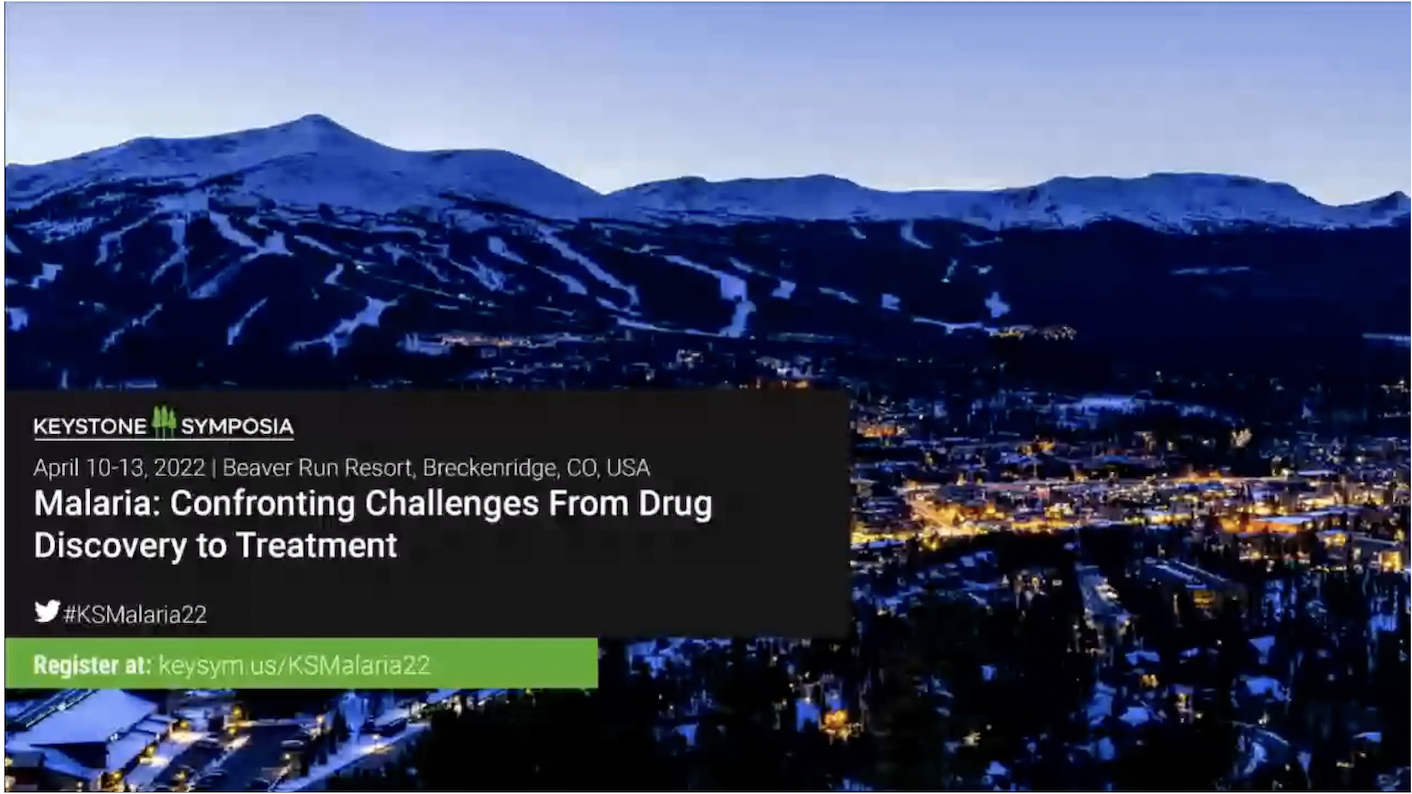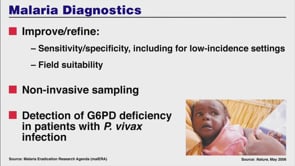Keystone Symposia “Malaria: Confronting Challenges from Drug Discovery to Treatment” – 2022: Day 2
Tuesday, 12th April 2022
Published: 19/04/2022
This report is brought to you by the MESA Correspondents Patricia Doumbe Belisse, Nutpakal Ketprasit, and Samuel Blankson. Senior editorial support has been facilitated by the Chairs and Speakers of the session.
THEMES: THEMES: Basic Science | Epidemiology | Health Systems
MESA Correspondents bring you cutting-edge coverage from the Keystone Symposia 2022 “Malaria: Confronting Challenges from Drug Discovery to Treatment”
Day 2: Tuesday, 12th April 2022
Session 3 : Experimental Models and Other Human Plasmodia
John H. Adams (University of South Florida College of Public Health, USA) used forward-genetic screens of Plasmodium mutants created by piggyBac mutagenesis to understand mechanisms of drug response and tolerance in parasites. They have developed the QIsec methodology that identifies and quantifies the piggyBac insertions efficiently. He carried out a large-scale forward-genetic phenotype screen in P. falciparum to identify genes allowing parasites to survive febrile temperatures. Screening identifies many P. falciparum mutants with differential responses to heat shock (HS). He found that mutants are more likely to be sensitive to artemisinin derivatives as well as to heightened oxidative stress. Adams’ findings highlighted an adaptation of PiggyBac approach for genome-scale mutagenesis and forward genetic screens of P. Knowlesi. He also identified common and species specific gene essentiality between P. Knowlesi and P. falciparum. Besides, he identified genetic factors associated with altered sensitivity to chloroquine (CQ).
Flaminia Catteruccia (Harvard T.H. Chan School of Public health, USA) started her talk by introducing their project, initiated three years back, that aimed at developing new strategies based on delivering drugs to mosquitoes thus blocking the transmission. . She talked about a process that blocks parasite transmission of Plasmodium falciparum by Anopheles mosquitoes without affecting the mosquito. After a tarsal exposure of mosquito to antimalarial drug atovaquone (ATQ) which is followed by infectious blood feeding, their analysis revealed an absence of oocysts in midguts presuming that Plasmodium parasites can be killed in the mosquito using ATQ. They also modeled the effect of using antimalarials on all bed nets and the results showed significant reduction in prevalence of infection particularly in areas of high insecticide resistance. They are currently testing the full potential of this strategy and also screening other active compounds. In vivo screens are revealing promising targets which are highly active (ELQ Qo, ELQ-613, ELQ-300). Catteruccia also highlighted that post -infection ATQ exposure in sugar solutions severely impairs Plasmodium growth stages.
James McCarthy (Peter Doherty Institute for infection and immunity, Australia) focused his talk on the blood stage human challenge model for the clinical development of antimalarials. At the onset of his talk, he presented a review of the antimalarials tested in this model (ferroquine, MK-5717, ZY-19489, lumefantrine among others). He expanded on the results of the clinical trial for ZY-19489 (well tolerated with a clean safety profile) that supported its progression to Phase 2 trials. He also discussed combination drug development strategy after reviewing published papers. Pharmacokinetics and pharmacodynamics (PK/PD) play a role in determining a drug’s safety and efficacy and those parameters can be obtained in a short timeframe. He also presented a study design and results of a challenge study focused on evaluation of transmission blocking activity of low-dose TQ (Thymoquinone). They found that a delayed effect was seen 7 days after TQ and 50mg of TQ reduced transmission intensity by 75 % (95%CI 50-100%). Despite this positive impact some limitations are rising about its efficacy in field settings.
Christopher Anthony Bower-Lepts (University of Cambridge, UK) presented an in-vitro chemogenomic screening system that uses Bar-seq to identify essential gene targets of antimalarial drug resistance. This makes use of a Plasmodium berghei Artificial Chromosomes (PbACs) engineered with barcodes for identification in pools through next generation sequencing (NGS). Their investigation to validate PbACs for in vitro chemogenesis in P. knowlesi showed that the parasite takes up PbACs following pooled transfection, and that P. berghei genes are expressed in P. knowlesi. They also observed that an increase in the number of vectors in the transfection pool increases throughput and selection of compounds. This Bar-seq approach is also capable of identifying resistance associated genes in addition to targets, and is more sensitive than conventional growth and dose-response assays.
Sachel Mok (Columbia University Medical Center, USA) talked about genetic crossing as a tool that can be used to uncover the genetic basis of drug resistance. She described P. falciparum genetic cross in humanized mouse: RF7 (DHA, PPQ-resistant) x NF54 (sensitive) and also showed that unique markers of artemisinin resistance are observed in comparing drugR-drugS. Pfcrt and plasmepsin 2 copy were identified as piperaquine resistance loci. Finally, tests to elucidate the molecular determinants of tolerance to ACT partner drugs showed that RF7 has differential sensitivity and that QTL maps Chr7 mutant PfCRT to Lumefantrine and Mefloquine sensitivity.
Michael T. Ferdig (University of Notre Dame, USA) elaborated on the use of quantitative trait locus (QTL) mapping for finding genes that control parasite traits such as resistance genes. Unique recombinant progeny were obtained by crossing drug resistant parent and drug sensitive parent. The resulting progeny may have desirable traits, have traits favoring one parent or the other, or may be skewed across the genome. He stated that one of the challenges is finding a locus and proposed a solution to use bulked segregant analysis (BSA)-directed QTL, as well as cloning and phenotyping individuals. He then highlighted other ongoing studies to improve and implement the application of this tool worldwide. He also mentioned Pfaat1 as an emerging mutant gene that causes drug resistance.
Donelly A. Van Schalkwyk (London School of Hygiene and Tropical Medicine, UK) and his team basically studied the use of ortholog approach to confirm resistance. They compared in vitro susceptibility of P. knowlesi and P. falciparum to a range of established and novel antimalarial agents under the same assay conditions and found that P. knowlesi have a significant difference of about 6 fold increase compared to P. falciparum. Ex-vivo susceptibility to cipargamin, an ATP4 inhibitor, regarding the two Plasmodium spp. including malariae and ovale also showed it to be highly potent against falciparum but reduced in the others. Ortholog replacement of Plasmodium berghei ATP4 with PfATP4 however restored susceptibility. PocATP4OR was the least susceptible ATP4 inhibitors compared to PfATP4OR.These findings support the necessity to add in vitro drug screens against P. knowlesi to those using P. falciparum strains to inform new drug discovery and lead optimisation.
Session 4 : Antimalarial Use and Drug Resistance
Didier Menard (Institut Pasteur and University of Strasbourg, France) gave an overview of the spread of partial artemisinin resistance (ART-R) both locally and globally. He began with the origin and history of partial ART-R, which became prominent with the discovery of the molecular marker Pfkelch13. He mentioned some examples of Pfkelch13 such as 13580Y in South America and Papua New Guinea, and 561H, 675V and 469Y in Africa. He made listeners aware that a new mutant of Pfkelch13, R622I has now been observed in Southeast Asia. There was significant association of this mutation with Day 3 positivity rate, and it conferred ART-R in both Dd2 and NF54 genetic backgrounds, which have been engineered with the mutant upon ring-stage survival (RSA) expression. Pfkelch13 R622I mutant was detected in 50% in recrudescent isolates, and there was no distinct cluster between Pfkelch13 wild-type and mutant R622I. He also showed that R622I is responsible for the variable performance of hrp2 based malaria RDTs as it caused the deletions of hrp2 and hrp3 (majority of deletions)
David A. Fidock (Columbia University Medical Center, USA) stated that multiple antimalarials interact with hemoglobin import and detoxification. Multi-omics studies showed the mutant K13 to play a role in ART-R and parasite physiology as it is linked to specific biological processes such as hemoglobin endocytosis and metabolism, lipid transport, signaling etc. K13 mutations vary widely in the level of ART-R and evidence showed a failure in dihydroartemisinin-piperaquine (DP) in Cambodia and across the Greater Mekong Sub-region. Another ART-R gene that has emerged and rapidly dominated in Cambodia is haplotypes of the mutant PfCRT; and this is quite different from the PfCRT observed in Africa. PfCRT binds and transports drugs. Piperaquine resistant PfCRT mutations reverse resistance to chloroquine (CQ). However, a new and potent antimalarial drug against P. falciparum called ZY-19489 has been discovered, which is able to select for novel PfCRT mutations and block CQ efflux.
Leann M. Tilley (University of Melbourne, Australia) talked about artemisinin resistance and the underlying mechanism. Her laboratory and colleagues demonstrated that artemisinin causes protein damage and proteasome disruption, leading to unresolved stress. Pfkelch13 mutant parasites seem to experience less stress when they are exposed to dihydroartemisinin. Also, it was suggested that partial loss of function of Pfkelch13 decreases DHA sensitivity. Mislocalization of Pfkelch13 apparently leads to cytostome dysfunction, suggesting the important role of Pfkelch13 in the cytostome. Then, she moved to a recent discovery of nucleoside sulfamates that kill P. falciparum in vitro. ML901, an exemplar of nucleoside sulfamate, found to inhibit tyrosine-tRNA synthetase (PfTyrRS), via a reaction-hijacking mechanism. Several assays were used to confirm that PfTyrRS is a target of ML901. Promisingly, ML901 kills P. falciparum in vivo but needs further optimization to improve oral bioavailability. This fascinating study might lead to other discoveries of compounds targeting aminoacyl-tRNA synthetases via the novel reaction-hijacking mechanism.
Colin J. Sutherland (London School of Hygiene and Tropical Medicine, UK) highlighted a result from field studies of patients with repeat malaria episodes over 2 years, suggesting a slow parasite clearance. Importantly, artemether-lumefantrine failure is not associated with Pfkelch13 mutations, suggesting other players are influencing ACTs treatment. He suggests that it is currently important to find alternative treatment strategies, for example, extend the curative duration of artemisinin and its derivatives to ensure complete parasite clearance. To monitor artemisinin resistance, we need molecular diagnosis for following up patients as it is more sensitive and gives more information than microscope smears.
Pierre Buffet (Inserm, France) showed that the spleen is a great clearer of infected red blood cells. A recent study showed that there was a massive accumulation of parasitized red blood cells in the liver, however, massive macro-phagocytic activity is also there to reduce the burden of hepatic infection. His team also developed a spleen-on-a-plate for screening drugs to block malaria transmission. This involved stiffening mature gametocytes with drugs and microsphiltrating them. Several safe compounds such as TD6450 and Cipargamin have been found to kill gametocytes at nano molar range or induce retention; encouraging clinical trials.
This report is brought to you by the MESA Correspondents Patricia Doumbe Belisse, Nutpakal Ketprasit and Samuel Blankson. Senior editorial support has been facilitated by the Chairs and Speakers of the session.
Published: 19/04/2022
This report is brought to you by the MESA Correspondents Patricia Doumbe Belisse, Nutpakal Ketprasit, and Samuel Blankson. Senior editorial support has been facilitated by the Chairs and Speakers of the session.
THEMES: Basic Science | Epidemiology | Health Systems



